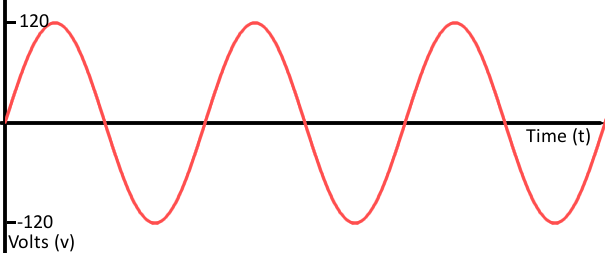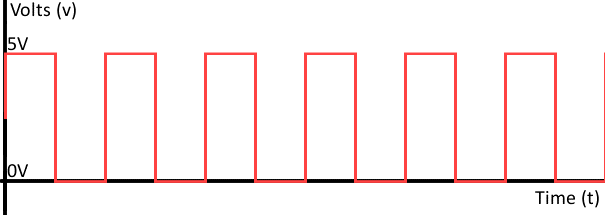What is the difference between Analog and Digital? | Do Supply Tech Support
Mục lục bài viết
What is the difference between Analog and Digital?
Terms like analog and digital are something we’ve heard about during our school days, and in terms of electronics, these two terms play a huge role. A signal can be either analog or digital, and the differences between them can sometimes be huge. The main difference is that when operating with analog signals there are infinite possibilities, whereas digital (discrete) signals operate in a finite realm where the possibilities are limited.

So, what is an analog signal? What is a digital signal? What are the key differences? You’ll learn all that at more in this tutorial!
What is a Signal?
Electronic signals here are basically time-varying variables. The signals contain some sort of information and the varying quantity in electrical engineering is either current or voltage. More often than not, it’s voltage. All in all, a signal represents a change of voltage or current over time.
Signals are all around us. A signal from your Wi-Fi receiver, a Bluetooth signal, an infrared signals, a signal from the radio station, etc. Many signals are passed through the air by using radio frequency waves, but they can also be passed through wires. Since other signals through the air might interfere with the signal that you want to transmit, a wire sounds like a better option, but it is usually less convenient.
What is an Analog Signal?
Let’s get to the nitty-gritty of the topic. An analog signal is basically a wave that is recorded and used in its original form. Let’s use a video game controller as an example. It usually has an analog stick, or joystick, which can move 360 degrees, not just left/right and up/down. Instead, the analog stick can move at an angle or even move slower, depending on the pressure you put. On the other hand, the arrows on a regular keyboard are only left/right and up/down.
Another common example is the audio recording. You use the microphone to sing and then save your song to the analog tape recorder. The signal from the microphone is analog, as well as the signal on the analog tape recorder.
Graphs of Analog Signals

Any signal, be it the analog or the digital one, can be represented via graphs. Since we’re talking about the signal that changes over time, a graph can perfectly represent its state during a specific period of time. On the vertical y-axis, we will put the voltage/current values and on the x-axis, we put time. An analog signal is immediately recognizable. It’s a smooth, continuous curve that varies between the negative and the positive values of the signal amplitude through time.
A classic example is a signal from your wall socket. The signal is usually locked between -120V and +120V. This means that this curve goes all the way to +120 and then drops to -120. The process is repeated through time. As you increase the resolution of the graph, you can see the infinite number of values of the signal. This allows electronic engineers to precisely measure the signal and its properties.
What is a Digital Signal?
If an analog signal is something that’s raw and unprocessed, is a digital signal the opposite? Yes! A digital signal is basically an analog signal sampled at an interval and then converted into numbers that are later stored on the digital device. Digital signals are widely used by computers, logic units, and microprocessors, which is something you’ve probably learned at school. If you’ve heard about binary numbers, you know how a digital signal can be described. 0 stands for ‘off’ while 1 stands for ‘on’.
If a current is present, it is represented by a “1”. If no current is present, you will use a “0”. That’s why digital signals are limited and aren’t as versatile as analog signals. Of course, we talked about binary numbers but digital signals don’t always look like that. If a digital component works at 5 Volts, that means that it will have to go back and forth between 0 and 5. Using binary numbers, we can say that if there’s no voltage at all, it’ll be shown by a “0”. However, if the voltage is 0.1 Volts, a graph of a digital signal will show 5 Volts. This is one of the reasons that digital signals can be quite constricted.
Graphs of Digital Signals

In comparison to a graph of an analog signal, a graph of a digital signal is bold and is an approximation of analog signal. The timing graphs are basically square waves. Let’s use the aforementioned example. At the beginning of the observed period of time, the voltage jumps to 5V and stays there for some time. It then immediately drops to zero and stays there for an exact same time. The signal goes on and on, repeating what we just mentioned.
As we said before, a digital signal is a representation of an analog signal. When looking at an analog signal from afar, it looks like it’s smooth. However, if you look closely when converting an analog signal to digital, you can see discrete steps and they represent the approximations. That’s the common difference between these two types of signals. A graph of a digital signal is stepping and square, while the analog waves are continuous and smooth.
Conclusion
Since you now learned key differences between analog and digital signals, it’s much easier to understand the theory about microcontrollers, logic-based electronics or even sound technology, as analog signals are pretty much used there. The best thing about these signals is that we can easily switch from one to another using A/D or D/A converters. This also allows for switching between infinite and finite realms and vice versa.
In computers and almost all electronics, digital signals are obligatory. Your computer, smartphone or TV wouldn’t be able to work without them and their presence allows engineers to come up with different electronic and logic-based devices.











